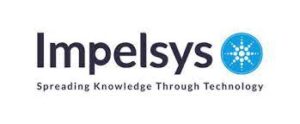Mobile-First eLearning: Effective Design Strategies

Introduction To Mobile-First eLearning Design
In the fast-paced digital era, the ways we learn and share knowledge have dramatically transformed. One revolutionary trend is the rise of mobile-first eLearning courses, which cater to the on-the-go lifestyle of modern learners. Ensuring mobile-optimized eLearning solutions enhance accessibility and flexibility is crucial for today’s digital educators and learners alike. Throughout the article, we will explore key strategies to optimize content for mobile-first audiences, ensuring a user-friendly and engaging learning experience.
Key Strategies To Optimize eLearning Content For Mobile-First Audiences
Emphasize Responsive Design In Custom eLearning
To succeed in the rapidly evolving landscape of mobile-first eLearning, prioritizing a responsive design is crucial for delivering quality educational experiences. Responsive design refers to the ability of an eLearning course to adapt seamlessly across various devices and screen sizes, including smartphones, tablets, and desktops. This adaptability is essential given the diverse preferences and usage habits of learners today.
Incorporating flexible layouts, scalable images, and media queries is key to enhancing both the usability and aesthetic appeal of eLearning solutions. For instance, flexible layouts allow content to rearrange itself based on the screen size, making navigation easier for the user. Scalable images ensure that visual elements retain their clarity and impact, whether viewed on a small mobile screen or a large monitor. Media queries enable specific styling rules for different devices, enhancing the overall User Experience.
Moreover, a recent report highlights that 65% of students prefer learning on mobile devices, underscoring the crucial importance of having a design that adjusts effortlessly to various formats. This statistic reflects a significant shift in learning preferences, making it essential for educational content developers to embrace a mobile-first approach.
In addition to boosting learner engagement, responsive design ensures that the valuable content crafted during the eLearning creation process reaches a broader audience. This wide accessibility not only expands the potential learner base but also maintains the quality of content delivery, regardless of the platform used. By focusing on responsive design, eLearning providers can create more inclusive and effective educational experiences that cater to the needs of all learners, fostering a more engaging online learning environment.
Utilize Adaptive Learning Technologies
Adaptive learning technologies are pivotal in customizing the learning journey for individual needs, especially in a mobile-first environment. Such technologies allow courses to adjust in real time based on a learner’s interaction and performance, offering personalized pathways to knowledge acquisition. This adaptability ensures that learners are neither overwhelmed nor under-challenged, maintaining motivation and fostering a deeper understanding of course material. By integrating adaptive learning technologies into Learning Management System (LMS) course creation, educators can provide bespoke yet flexible instructional experiences. This tailored approach not only supports diverse learning styles but also enhances learner retention and satisfaction.
Prioritize Mobile-Compatible Content Formats
Effective mobile-first eLearning demands thoughtful consideration of content formats. Traditional content like long text paragraphs do not translate well on small screens, often leading to disengagement. Instead, breaking down complex information into bite-sized chunks, using infographics, interactive elements, and videos can enhance comprehension and appeal. For instance, microlearning (delivering content in small, focused bursts) is particularly effective in keeping up with the short attention spans of mobile users. By carefully choosing content formats that are mobile-compatible, educators ensure that learners can absorb information effortlessly during short, spontaneous sessions.
Streamline LMS Course Creation For Mobile Devices
Creating a comprehensive Learning Management System that prioritizes mobile-first eLearning is not just a contemporary trend; it is an essential strategy for long-term success in education and training. In an increasingly mobile-centric world, a streamlined LMS must offer intuitive navigation and quick access to a diverse range of resources. It should feature a seamless User Interface that effectively aligns with learners’ mobile usage patterns and preferences, thus enhancing their overall experience.
To achieve this, key features of the LMS might include innovative push notifications that remind users of important deadlines and updates, ensuring they stay engaged and informed. Additionally, offline access to content becomes crucial, allowing learners to download materials and study at their convenience, regardless of internet connectivity.
A simple yet engaging dashboard is also vital; it should provide learners with easy-to-navigate course materials, progress tracking, and relevant suggestions tailored to their learning habits. By integrating these elements into the LMS, the platform not only supports but actively enhances the mobile learning experience, transforming potential hurdles into seamless interactions.
Moreover, a well-designed LMS platform is a critical factor in the effective implementation of custom eLearning development strategies. It serves as a foundation where educators and trainers can deploy tailored content that meets specific learning objectives, monitors participant progress, and adjusts to individual learning styles. By effectively harnessing these components, organizations can foster an enriching learning environment that caters to the diverse needs of learners while driving engagement and retention.
Incorporate Gamification For Enhanced Engagement
Gamification can turn mundane eLearning courses into engaging and interactive experiences. By embedding game-like elements, such as points, badges, leaderboards, and challenges, educators can significantly enhance learner interaction and motivation, especially in a mobile context. Gamification taps into competitive instincts and curiosity, making learning enjoyable and rewarding. Moreover, it can create a sense of achievement and progress, encouraging continuous engagement with the course content. Incorporating gamification into mobile-first eLearning solutions is a powerful way to capture attention and sustain learner interest in an increasingly digital world.
Conclusion
In conclusion, designing mobile-first eLearning courses requires a strategic approach that includes responsive design, adaptive technologies, and engaging content formats. By prioritizing these elements throughout the eLearning creation process, educators and developers can provide flexible, accessible, and enjoyable learning experiences tailored to the needs of mobile-savvy learners. Empower your learners by implementing these strategies in your courses today.










